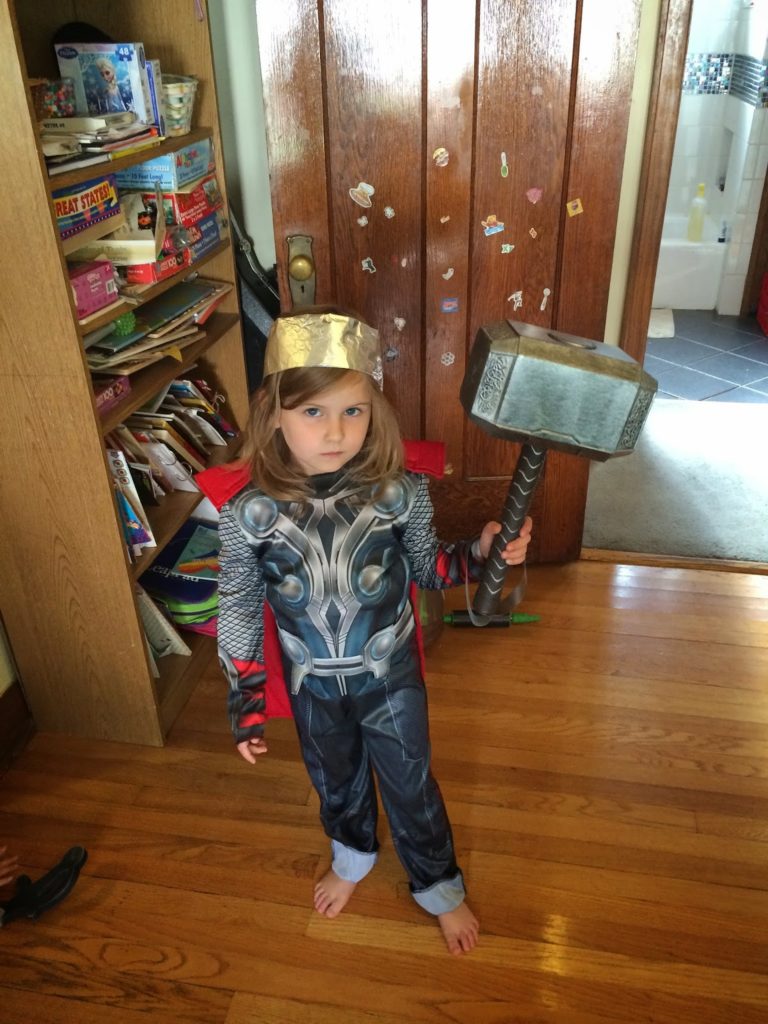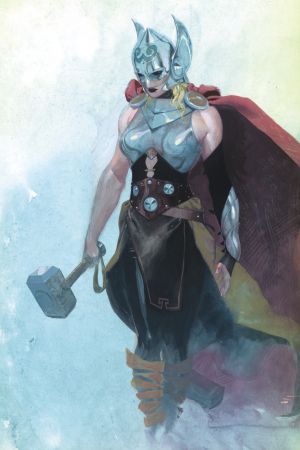And that no one may wonder that this sex laboured at warfare, I will make a brief digression, in order to give a short account of the estate and character of such women. There were once women among the Danes who dressed themselves to look like men, and devoted almost every instant of their lives to the pursuit of war, that they might not suffer their valour to be unstrung or dulled by the infection of luxury. For they abhorred all dainty living, and used to harden their minds and bodies with toil and endurance. They put away all the softness and lightmindedness of women, and inured their womanish spirit to masculine ruthlessness. They sought, moreover, so zealously to be skilled in warfare, that they might have been thought to have unsexed themselves. Those especially, who had either force of character or tall and comely persons, used to enter on this kind of life. These women, therefore (just as if they had forgotten their natural estate, and preferred sternness to soft words), offered war rather than kisses, and would rather taste blood than busses, and went about the business of arms more than that of amours. They devoted those hands to the lance which they should rather have applied to the loom. They assailed men with their spears whom they could have melted with their looks, they thought of death and not of dalliance. Now I will cease to wander, and will go back to my theme.
– Saxo Grammaticus, The History of the Danes, Book 7.
Over the last few days, many people shared a cool link about Viking women warriors that has been circulating lately. It came from Tor.com, the sci-fi/fantasy publisher that has recently launched an excellent online publication. The piece declares, “Half of the Warriors Were Female,” based on new archaeological evidence. That title does not actually hold up to a closer reading of the evidence, but the evidence is still really interesting. More below.
Part of why I’m interested is the backlash to the new female Thor, who looks like this.
 |
| THOR! (This is my daughter) |
Oh wait, actually more like this.
The article then provided fodder for people wanting to argue not just that female warriors were artistically permissible (because everything is artistically permissible), but supported by historical evidence. It’s part of the much bigger conversation about
diversity in speculative fiction.
Unfortunately, the evidence, which comes from
this study (you will need a good library to access it), doesn’t support the headline. The blog “
Missed in History Class,” provides an excellent summary of the actual findings, as does this comment to the original post, and
this by Kate Wiles.
Here are the takeaway points, as far as I am concerned.
1. I was skeptical of the Tor article, and thought – I suspect that if I dug into the original evidence, I’d find that we have a better idea of biological sex balance of the overall early Viking population in England, but that the “warrior” claim is not especially supported by available evidence – because that evidence is going to be fragmentary and limited in what it reveals (as is the nature of such archaeological work, as vital as it is).
2. I didn’t want to be the grumpy historian mansplaining away Viking women warriors, so I let it go. More importantly …
3. The actual evidence is REALLY COOL and here are things worth knowing. Common wisdom suggests that the initial wave of Viking invaders of Britain were almost all men. Analysis of the bones (osteoarchaeology) of 13 first-wave Vikings shows 7 men and 6 women. That common wisdom must be questioned, as then must the narrative that the first-wave was a bunch of raiders, rather than colonizers. This is good stuff, well worth thinking about.
Also, we learn that using grave goods to determine biological sex is bad methodology (archaeologists already knew this, by the way). Bodies with jewelry are not necessarily female. Bodies with weapons are not necessarily male. But in the 19th and early 20th centuries, such assumptions were routinely made. Bones are a much better way of determining biological sex, and there have been women found with weapons. Being buried with a weapon doesn’t mean that the woman fought with the weapon, but at least it shows its culturally a possibility.
4. Given the quote with which I opened above, we actually already knew that. There is lots and lots of textual evidence for a tradition of women warriors in pre-Christian Scandinavian culture. Notice that Grammaticus (who lived in the 12th century), who we believe worked for an Archbishop of Denmark, is writing about this as a distant past tradition.
5. If you have time, you could go read
Book 7 and skip down find the word “Alfhild.” It’s a great story, suitable for Disney, in that we’ve got a beautiful princess whose parents are so screwed up that her dad locks her in a room with snakes, and when Alf the suitor defeats the snakes, her mom convinced her not to trust Alf. Alfhild runs away and becomes an awesome pirate. Later, Alf’s ship and Alfhild’s ship encounter each other in battle. Alf is winning, but then Alfhild’s helmet gets struck off and so he either – sweeps her into his arms and kisses her and they all live happily ever after; or, he rapes her then marries her and they all live ever after.
This is not atypical of medieval women-warrior narratives. One of my favorites is the Romance of Silence. Silence is a woman who puts on armor, goes to court, the queen falls in love with the beautiful young warrior, Silence demures, the queen gets mad and talks to the king, and Silence is sent off on a hopeless quest to capture Merlin. Merlin, it is said, “can be defeated by no man” (yes, echoes of Tolkein. He was a medievalist). When Silence meets Merlin, Merlin laughs and laughs and they all head back to court, tell the king about his treacherous wife, and so the king marries Silence instead. Silence ends the story, like Alfhild, in a dress. Gender norms are restored.
6. I understand the current debates among fiction writers focused on whether the Middle Ages were mostly homogenous or quite diverse. My attitude is that it depends where you look, and that they were both homogenous and diverse. The stakes, though, are whether authors who do not write with characters diverse in race, gender, religion, etc. can say, “I’m just being accurate!” The stakes are whether people who introduce diversity into medieval western settings, which thanks to Tolkein (and now GRRM) is really common, can be criticized for being inaccurate. My attitude is generally this – write whatever story you want, understand that the choices you make about diversity have consequences, and that they are choices. History is not a straitjacket for fantasy.
We can have a conversation about historical fiction another day.

